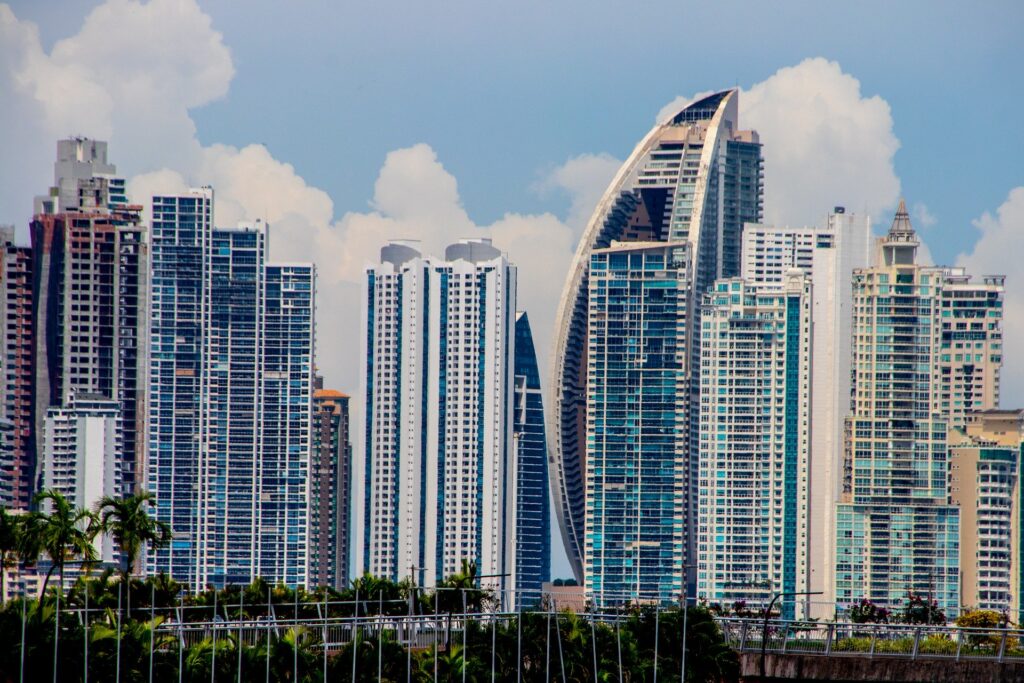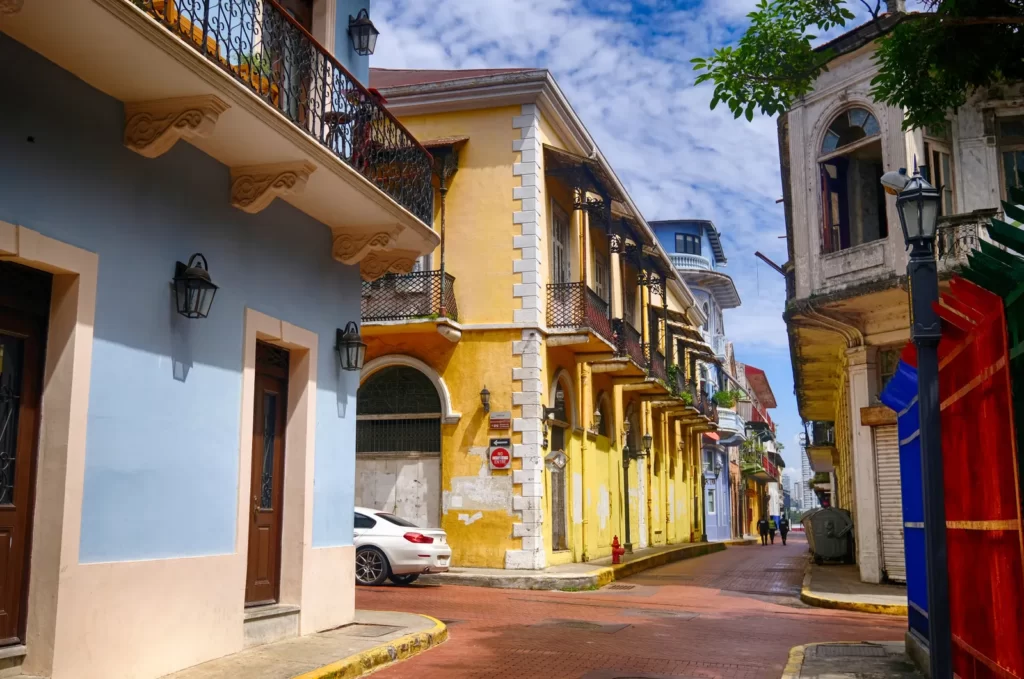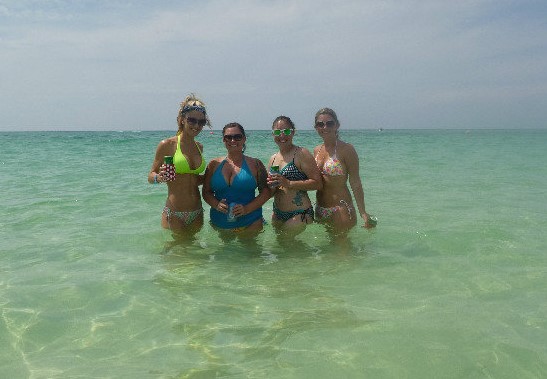Interviewer: There are countries famous for major historical events and others for unique sites rarely found anywhere else. Panama has both. The Panama Canal is an engineering marvel, and it put this country on the map. But don’t let Panama City’s modern skyline fool you. It’s the natural wonders and native culture that draws raw travelers the world over. Some may even end up living here, but hold up before you pack your bags. Forget what you thought you knew and get to know the real the raw Panama. The city of Panama was founded by the Spanish conquistadors in the early 16th century. In 1671, the city was attacked by pirate Captain Morgan, who burned it down. The remains are found in an area called Panama La Vieja, or old Panama. Panama City has two old cities, the old old city, which is mostly ruins. And this one, Casco Viejo, which is still really old and where most travelers begin their journey. The Casco Viejo or Old Quarter preserves the more recent colonial history of the city. Walking around the old quarter can be an almost surreal experience. Abandoned buildings sit side by side with others occupied by locals who’ve lived and conducted business here for years. Casco Viejo residents are accustomed to tourist.
Alan: Help, though. You need to tell me.
Interviewer: Well, I want. This is a Panama hat, correct?
Alan: One of my hats.
Interviewer: But it it says it was made in Ecuador.
Alan: Yes. Everything in the hat is made in Ecuador. Wow. So the original came from Ecuador. Okay.
Interviewer: You can put that, huh?
Alan: It’s a different hat. Same had different look like much of Central America. Panama’s cultural influences are diverse. There are African influenced traditions such as Lady Pablito, which represents the Afro and Chilean heritage. If souvenir shopping, you will most likely run into the indigenous residents selling their cultural items. So this is a mola one of the most sought after handicrafts in all of Latin America. And it’s a specialty of the different indigenous ethnic groups here in Panama. Folkloric culture is another influence felt not only in the street but also in restaurants like Tana’s with its famous folkloric dancing shows. Panama City skyline rivals that of other great cities around the world standing tall. These buildings boast a booming banking and trade economy that has influenced this small country since the famous canal was built. Despite the skyline, it’s not super spread out like many capital cities, but it can be dense and crowded. Bridges are necessary to connect the different areas and attempt to alleviate the clogged traffic.

Alan: People come here, take a boat, then go eat at the restaurant, or they ready to come here on a Sunday or a Saturday in the morning with the families. Ride a bike or take your skate.
Interviewer: Like to me it seems very first world at first glance because you have all the huge skyscrapers. I feel like I’m in the United States or I’m in Europe or something. Then you go somewhere and you’re like, in the “Third World”. It’s the ultimate city of contrast!
Alan: It’s a city of contrasts, because the mentality of the people is like, Oh, there’s indigenous. Oh no, that’s Third world. But come on, there’s indigenous everywhere. Brazil. Even in the United States or in Canada.
The Panama Canal made this country a rock star in the 20th century, spurring development and economic trade from around the world. As a result, it developed quicker than many of its Central American neighbors, and these growing pains are still evident today.
I was not prepared to see my country, you know, changing so much and so, so fast.
Construction is a constant reminder of the good and bad of rapid, unfettered growth. This markets are ubiquitous in port cities the world over strong, overwhelming fishy smells turn my stomach and I usually avoid these markets. But Panama Cities is one of the cleanest I’ve ever seen.

Interviewer: What about going to have some shrimp….big shrimps.
Alan: All right. Let’s switch over and then. Yeah, if you want some. Yeah, that’s cool, because I want some of that. I will drive you to a place where are guaranteed that if we eat this, we are not going to get sick.
– Arrived to the place –
Interviewer: I feel comfortable because A, it looks very, very clean. And number two, because I saw some other travelers here, some tourists, some outsiders.
Alan: Yes. You can see people from every right from all over the place. Yeah.
Executives or like, you know, working. But even class B, working class people. Everybody comes here. Everybody loves displays.
After spending the day in the typical nice parts of Panama City, I wanted to see how the other Panamanians lived. I wanted to see the hood. These neighborhoods are heavily patrolled by police, but the people just can’t be beat. They bravely soldier on, living their lives, loving their kids, and doing their best to create a better life for themselves. Omar took me to a famous barrio called Rio, known to be an historical place.
Alan: don’t you find it surreal? This is one of the most historical towns. All right. You know, in Panama.
Interviewer: Rio, what’s it famous for? Why is it It was historic?
Alan: Because it used to be the the hometown of world champion boxer Roberto Duran.
Interviewer: Roberto Duran, one of my heroes growing up. All right. All right. What are we going to get here?
Alan: to eat something..This kind of freedom. It’s got a fleet of fried fish, fried fish.

Interviewer: So much food for so little money. If you’re on a tight budget like me, this is the spot for you. I can understand why people would want to come to Panama City. It’s really it’s like it’s so diverse, you know, It’s really modern, really cosmopolitan.
It’s easy to get around in terms of driving like we’re driving around the city and it’s no problem. It’s semi organized, you know, compared to a lot of capital cities. Yet they still have the old part of the city. You know, they’ve got a couple of old towns. And so there’s some history here as well. Then we’re going to do some day trips and we’re going to get outside of Panama City and and, you know, have that experience as well. Whenever I travel, I’m always looking for a good place to run. And here they have. The perfect place is called Cinta Costa, which roughly translated, means coastal ribbon.
So I’m going to come back a little later on and grab a run in and what a view i found. Panama City at night turns magical, while during the day seems just all about business.
Remember we’re in the free zone and everybody comes from all over the world to come here. And that’s because everything is free.
Cologne is about an hour drive north of Panama City, and the free zone is really the only reason travelers come here. It’s amazing the lengths people will go to simply avoid, I mean, reduce taxes. I sure hope my accountant isn’t reading.
Thank you, Alan, for the outstanding tour of Panama!
Alan: Thanks to you, Greg!

